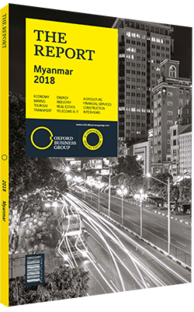Modernising smallholder farms to boost production in Myanmar
With a view to achieving shared prosperity from increased food exports, development partners are working with the government to increase rice production and encourage the adoption of appropriate mechanisation in the agricultural value chain.
Myanmar’s crop output is currently dominated by small-scale rice farmers, who operate with little knowledge of modern cultivation methods. Seeing as production averages are far lower than those achieved regionally, an increase in the provision of machinery would enable farmers to produce more paddy while also minimising costs. This would lead to higher exports, support food security and encourage economic growth.
Of Myanmar’s 12.8m ha of cultivated land, only 20% is farmed using machinery. Therefore, the Ministry of Agriculture, Livestock and Irrigation (MALI) allocated MMK82bn ($62.6m), or 11% of its capital budget in FY 2016/17, to mechanisation efforts, which are handled by the Agriculture Mechanisation Department.
Workforce
No one feels the strain of poor crop yields more than smallholder farmers. While enhanced mechanisation efforts will lead to greater output, there are fears that machinery will weaken labour opportunities for marginal and landless farmers. This is true to some degree and represents a challenging balancing act for policymakers, particularly as the number of people working in the sector has fallen due to rural-urban migration since the economy was opened up.
Productivity Plan
Given the fragmented nature of crop production in Myanmar, the country’s Agriculture Development Strategy (ADS) aims to improve infrastructure such as roads and irrigation, and promote the mechanisation of farmland, including for seeding, transplanting and harvesting. Another goal of the strategy is to enable private financial institutions to provide more credit to farmers so they can purchase or rent machinery. Other activities to be developed include a training programme on the proper use of machinery, and the establishment of a rural workshop to serve as a repair and maintenance facility. The ADS aims to further support mechanisation by collaborating with the private sector to ensure the timely supply of spare parts. Under the strategy, the Agriculture Mechanisation Department will spend MMK246.64bn ($188.4m) between FY 2017/18 and 2021/22 to achieve these targets. Roughly 90% of funds will be provided by development partners, 9% by the state budget, and the remainder by the private sector and farmer organisations.
In addition to the aforementioned targets, the draft ADS released in September 2017 suggested that the Department of Agricultural Mechanisation “gradually transfer its capital stock and agricultural mechanisation stations to the private sector, so as to assure development of [the] private sector in rural areas and to contribute to higher productivity”. Prior to the development of the ADS, donor financing dedicated to mechanisation efforts totalled $4.22bn between 2010 and 2015, according to the World Bank.
Private Sector
The relaxation of rules for the import and distribution of heavy machinery, fertilisers and pesticides are likely to support the development of Myanmar’s agriculture sector by increasing the quality of available farming inputs. With more space given to private investors and foreign enterprises to conduct business in the country, an increasing number of private actors are stepping in to support mechanisation efforts.
In February 2017 Yanmar Myanmar, a joint venture between Yanmar and Japan-based Mitsui, opened a facility in the Thilawa Special Economic Zone that will import and distribute agricultural machinery in the country. The 930-sq-metre sales centre includes service facilities, a large parts centre, and education and training areas for farmers and service workers. The company invested $6m in the facility, which will import the equipment from Japan. Takesi Terada, managing director of Yanmar Myanmar, told local media that the firm also plans to conduct knowledge sharing to facilitate the development of the broader agriculture sector.
You have reached the limit of premium articles you can view for free.
Choose from the options below to purchase print or digital editions of our Reports. You can also purchase a website subscription giving you unlimited access to all of our Reports online for 12 months.
If you have already purchased this Report or have a website subscription, please login to continue.

